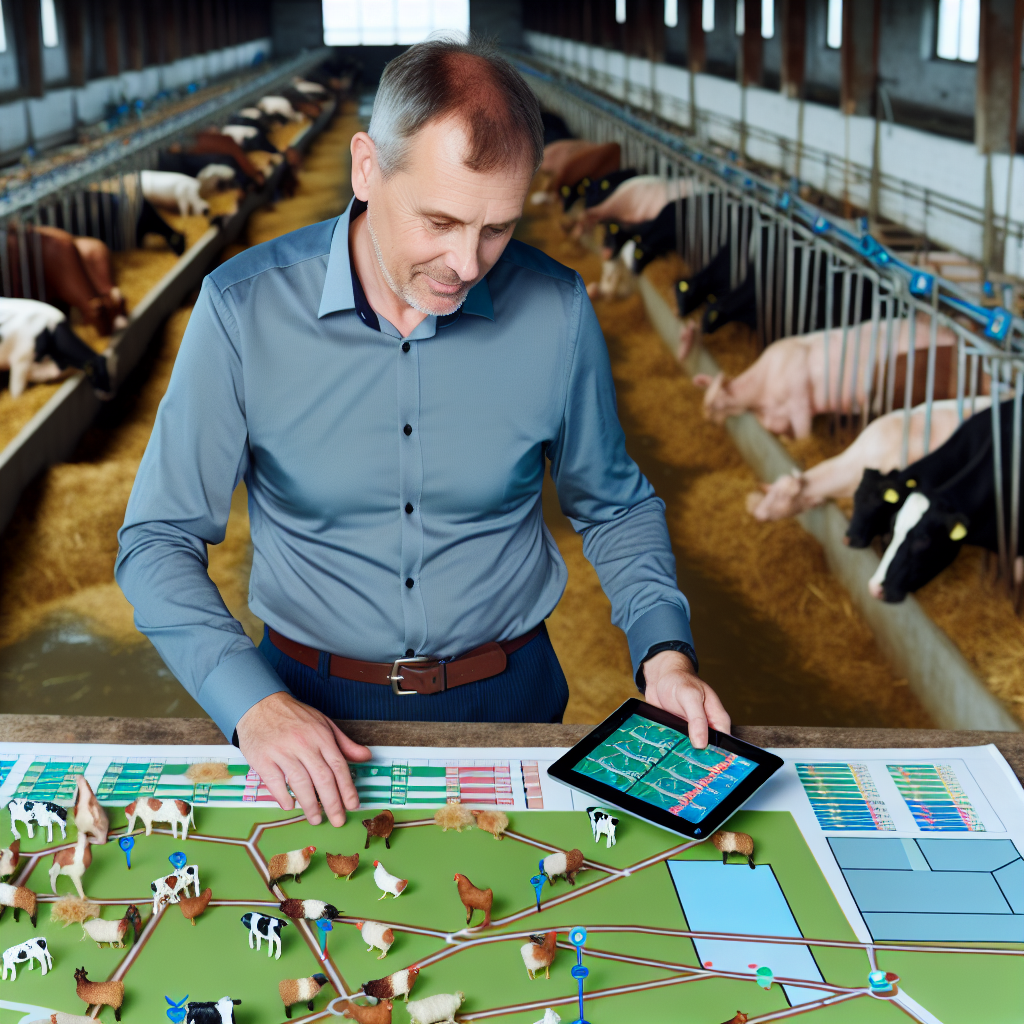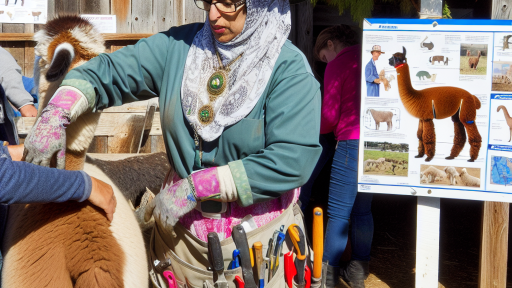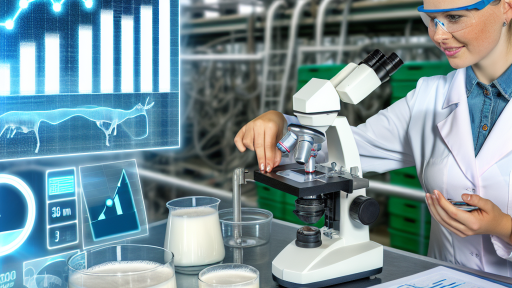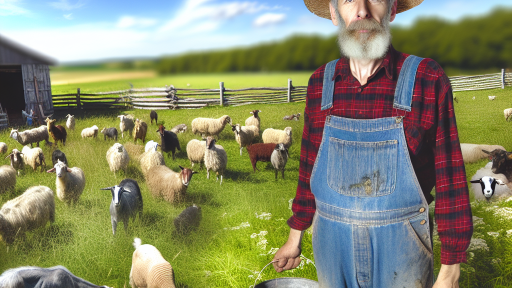Introduction to Livestock Transport and Its Importance in Farm Efficiency
Livestock transport plays a critical role in modern agriculture.
It directly affects farm efficiency and productivity.
Efficient transport systems ensure that animals reach their destinations safely and quickly.
Moreover, effective transport helps maintain the health and well-being of livestock.
Understanding the Logistics of Livestock Transport
Logistics involves planning and executing the movement of animals.
Farmers must consider various factors in their transport strategy.
Distance, transportation mode, and weather conditions are vital factors.
Proper planning reduces stress for both animals and handlers.
The Economic Impact of Efficient Transport
Organizing livestock transport affects a farm’s bottom line.
It reduces costs associated with feed and care during transport.
Additionally, timely arrivals lead to higher market prices for farmers.
Farmers can increase their profit margins by optimizing transport.
Technological Advances in Livestock Transport
New technologies significantly improve livestock transport efficiency.
GPS tracking ensures timely arrivals and route optimization.
Modern vehicles are designed to provide comfort and safety for animals.
Transform Your Agribusiness
Unlock your farm's potential with expert advice tailored to your needs. Get actionable steps that drive real results.
Get StartedAdditionally, monitoring systems can track animal health throughout the journey.
Regulatory Considerations in Livestock Transport
Farmers must comply with regulations governing livestock transport.
These regulations aim to ensure animal welfare during transit.
Understanding the legal landscape helps farmers avoid potential penalties.
Moreover, compliance can enhance the farm’s reputation.
Strategies for Improving Livestock Transport
Farmers can implement several strategies to improve transport efficiency.
- Evaluate current transport routes for optimizations.
- Train staff on best practices for loading and unloading animals.
- Invest in well-ventilated vehicles to enhance animal comfort.
- Utilize technology for planning and monitoring transport.
Assessing Current Livestock Transport Methods and Their Limitations
Traditional Transport Methods
Many farms rely on traditional livestock transport methods.
Common practices include using trailers and livestock trucks.
These methods have been effective but show significant limitations.
Limitations of Conventional Trucks
Conventional trucks often lack proper ventilation during transport.
This can lead to stress and health issues for the animals.
Additionally, they may not provide adequate space for larger livestock.
Inconsistent handling can cause injury and discomfort.
Impact on Animal Welfare
Animal welfare is a crucial concern in livestock transport.
Stressful transport can decrease overall health and productivity.
Poor conditions can reduce weight gain and meat quality.
Maintaining high welfare standards is essential for farm efficiency.
Environmental Concerns
Traditional transport methods also raise environmental concerns.
Fuel consumption contributes to greenhouse gas emissions.
Additionally, noise pollution from transport vehicles can disturb local wildlife.
The Need for Innovation
Addressing these limitations requires innovative solutions.
Implementing new technologies can improve transport efficiency.
Adopting better-designed vehicles enhances animal welfare.
Farmers should explore sustainable alternatives for livestock transport.
Showcase Your Farming Business
Publish your professional farming services profile on our blog for a one-time fee of $200 and reach a dedicated audience of farmers and agribusiness owners.
Publish Your ProfileThe Impact of Transport Conditions on Livestock Health and Welfare
Understanding Transport Stress
Transport stress significantly affects livestock health.
Animals experience physical and psychological distress during transportation.
This stress can lead to deteriorating health conditions.
Transportation often interrupts animals’ normal routines.
Additionally, changes in environment contribute to anxiety levels.
Temperature and Humidity Effects
The transport environment heavily impacts livestock well-being.
Extreme temperatures can lead to heat stress or hypothermia.
Humidity levels also play a crucial role in animal comfort.
Proper ventilation is essential during transport.
Otherwise, animals can suffer from heat exhaustion quickly.
Duration of Transport
Long transport durations can adversely affect livestock.
Prolonged periods without food or water are detrimental.
Animals may exhibit signs of fatigue and distress.
Therefore, it is vital to plan transport routes carefully.
Minimizing travel time enhances animal welfare significantly.
Handling Practices During Loading and Unloading
Gentle handling during loading and unloading is crucial.
Stressful experiences can have lasting effects on livestock.
Proper training for handlers can enhance animal care.
Additionally, using facilities designed for easy access helps.
These practices contribute to minimizing trauma and injury.
The Importance of Monitoring Livestock During Transport
Regular checks during transport ensure animal welfare.
Monitoring can help identify signs of distress early.
Implementing systems for animal observation is beneficial.
It fosters prompt response to any health issues encountered.
Ultimately, vigilant monitoring promotes healthier outcomes.
Find Out More: Selecting the Right Breeds for Your Farm
Regulatory Compliance and Best Practices in Livestock Transport
Understanding Regulatory Frameworks
Regulatory compliance is critical in livestock transport.
Governments set specific guidelines to protect animal welfare.
Different regions have unique regulations governing transport.
Transporters must familiarize themselves with local laws.
Failing to comply can lead to penalties and fines.
Key Regulations to Follow
- The Animal Welfare Act outlines humane treatment standards during transport.
- The Federal Motor Carrier Safety Administration regulates transportation safety.
- State agencies may also impose additional restrictions.
Furthermore, adhering to these regulations enhances farm reputation.
Transporters should prioritize animal safety at all stages.
Best Practices for Livestock Transport
Implementing best practices improves transport efficiency.
Pre-transport planning is essential for a successful operation.
This includes scheduling appropriate loading and unloading times.
Additionally, using suitable vehicles ensures comfort for the animals.
Preparing Livestock for Transport
Preparing livestock involves evaluating their health before transport.
Veterinary checks can prevent the spread of disease.
Moreover, familiarizing animals with the transport environment helps reduce stress.
Showcase Your Farming Business
Publish your professional farming services profile on our blog for a one-time fee of $200 and reach a dedicated audience of farmers and agribusiness owners.
Publish Your ProfileMaintaining Animal Welfare During Transport
Monitoring environmental conditions is vital while on the road.
This includes checking for temperature, ventilation, and space.
Frequent breaks during long journeys provide necessary rest.
Trained personnel must manage the loading and unloading process.
Staying Informed
Transporters should stay updated on regulatory changes.
Regular training sessions can enhance compliance knowledge.
Networking with industry professionals enables sharing best practices.
Participating in workshops and seminars can educate about new regulations.
Discover More: Optimizing Breeding Cycles for Maximum Efficiency
Innovative Technologies to Enhance Livestock Transport Efficiency
Smart Tracking Systems
Smart tracking systems significantly improve livestock transport.
These systems utilize GPS technology to monitor transportation routes.
Farmers can make real-time adjustments to avoid traffic and delays.
Moreover, tracking helps ensure animal welfare during transit.
With smart tracking, livestock conditions are continuously monitored.
Automated Loading and Unloading Solutions
Automated loading and unloading systems streamline operations.
Robotic systems reduce the time needed for loading livestock.
Additionally, these systems decrease the risk of injury to both animals and handlers.
Automation allows for quick adjustments based on animal behavior.
As a result, these solutions enhance overall farm efficiency.
Temperature-Controlled Transportation
Temperature control is vital for livestock health during transport.
Transport vehicles equipped with climate control enhance comfort.
Maintaining proper temperature reduces stress among animals.
Additionally, it prevents illness during long journeys.
Innovative thermal insulation materials improve transportation efficiency.
Telematics for Fleet Management
Telematics enables effective fleet management for livestock transport.
This technology provides vital information on vehicle performance.
It allows farmers to optimize routes and manage fuel consumption.
Furthermore, telematics aids in scheduling and maintenance tracking.
Consequently, this leads to decreased operational costs.
Mobile Applications for Coordinated Efforts
Mobile applications enhance coordination in livestock transport.
These platforms facilitate communication between farmers and transporters.
Users can easily schedule pickups and deliveries through the app.
Moreover, notifications update individuals about any changes in plans.
This seamless communication streamlines operations significantly.
You Might Also Like: Optimizing Water Quality in Fish Farming Environments

Cost-Benefit Analysis of Optimizing Transport Routes and Schedules
Introduction to Cost-Benefit Analysis
Cost-benefit analysis examines the economic implications of decisions.
It evaluates potential costs against anticipated benefits.
Livestock transport optimization provides a vital case study.
Determining the Costs of Transport Optimization
Various costs impact livestock transport effectiveness.
Fuel expenses constitute a significant portion of transport costs.
Showcase Your Farming Business
Publish your professional farming services profile on our blog for a one-time fee of $200 and reach a dedicated audience of farmers and agribusiness owners.
Publish Your ProfileVehicle maintenance and insurance also need consideration.
Labor costs for drivers and support staff should not be overlooked.
Efficiency improvements can potentially reduce these operational costs.
Evaluating the Benefits of Streamlined Routes
Streamlining routes significantly enhances farm efficiency.
Reduced travel times lead to lower fuel consumption.
Shorter distances improve animal welfare during transport.
Efficient transport enhances timely delivery, benefiting producers.
As a result, this fosters stronger buyer relationships.
Impact on Overall Farm Productivity
Optimizing transport contributes to overall farm productivity.
Faster transport results in healthier livestock upon arrival.
Efficient logistics can support increased revenue potential.
Additionally, improved transport management reduces delays.
This ensures that animals meet market demands in prime condition.
Real-World Examples of Successful Optimization
Several farms have successfully optimized their livestock transport.
Green Valley Farms reduced transport costs by 20% through route adjustments.
Sunny Meadows implemented a new scheduling system that minimized idle time.
These measures resulted in enhanced animal well-being and farmer profitability.
Such examples provide valuable insights for others in the industry.
Implications of Optimized Transport Solutions
Optimization of transport routes and schedules proves beneficial.
Farmers experience reduced costs and increased productivity.
Investing in efficient transport strategies is essential for competitiveness.
Consequently, understanding cost-benefit trends is crucial.
With diligence, farm operations can thrive in today’s market.
Discover More: Ensuring Animal Welfare During Transportation
Case Studies of Successful Livestock Transport Optimization
Farm Fresh Solutions: Reducing Transport Costs
Farm Fresh Solutions implemented a new transport scheduling system.
This reduced costs significantly for their cattle transport.
They adopted a centralized dispatch system to manage schedules.
This change improved efficiency in picking up animals.
As a result, they decreased fuel consumption and improved delivery times.
Green Meadows Ranch: Enhancing Animal Welfare
Green Meadows Ranch focused on livestock comfort during transport.
They upgraded their trailers with better ventilation and bedding.
This prevented stress and ensured animal well-being.
Consequently, the livestock arrived healthier and ready for processing.
They reported a lower mortality rate and higher quality meat.
Sunny Sky Farms: Leveraging Technology
Sunny Sky Farms implemented GPS tracking for their transport vehicles.
This allowed for real-time monitoring of routes and conditions.
With this system, they could respond quickly to unforeseen issues.
Moreover, they optimized travel routes to minimize delays.
Therefore, their delivery efficiency increased, saving both time and money.
Golden Harvest Livestock: Collaborating Across the Supply Chain
Golden Harvest Livestock worked closely with local abattoirs.
Showcase Your Farming Business
Publish your professional farming services profile on our blog for a one-time fee of $200 and reach a dedicated audience of farmers and agribusiness owners.
Publish Your ProfileThis collaboration improved their scheduling processes immensely.
They synchronized transport times with processing schedules.
This ensured a steady supply of livestock to meet demand.
In turn, both parties benefited from reduced wait times and costs.
Red Valley Farms: Training Employees for Success
Red Valley Farms invested in training their transport staff.
They focused on safe handling and loading techniques for livestock.
This training significantly improved the efficiency of loading processes.
Furthermore, it ensured the safety of both workers and animals.
As a result, they achieved higher satisfaction ratings from their customers.
Future Trends in Livestock Transportation and Sustainability Practices
Adoption of Advanced Technologies
Livestock transportation increasingly embraces advanced technologies.
Smart trailers now monitor temperature and humidity levels.
These improvements enhance animal welfare during transport.
Moreover, GPS tracking ensures timely arrivals to destinations.
Automated systems optimize loading and unloading processes.
Sustainable Transportation Practices
Farmers are prioritizing sustainable practices in livestock transport.
Utilizing biofuels reduces carbon emissions significantly.
Additionally, some farms are experimenting with electric transport vehicles.
These efforts contribute to smaller carbon footprints.
Furthermore, regenerative farming practices support overall sustainability.
Regulatory Changes and Industry Standards
Changes in regulations impact livestock transport operations.
New guidelines require greater transparency in transport practices.
These regulations aim to improve animal welfare during transit.
Moreover, industry standards are becoming more stringent over time.
This trend encourages more farms to adopt best practices.
Consumer Demand for Ethical Practices
Consumers drive demand for ethically sourced livestock products.
This pressure influences transportation methods across the supply chain.
Many customers now prefer farms that demonstrate sustainability.
As a result, farms must adapt to meet these evolving preferences.
This evolution also promotes transparency in livestock transportation.
Collaborations and Partnerships
Collaboration with logistics companies enhances transport efficiency.
Partnerships facilitate sharing innovative solutions and best practices.
In this way, farms streamline their operations significantly.
Working together fosters a supportive network for sustainable practices.
Thus, collective efforts strengthen the entire industry.
Additional Resources
Agriculture Innovation: 10 Tech Trends to Watch in 2023 …
Navigating Livestock Transportation: Best Practices for Unloading




